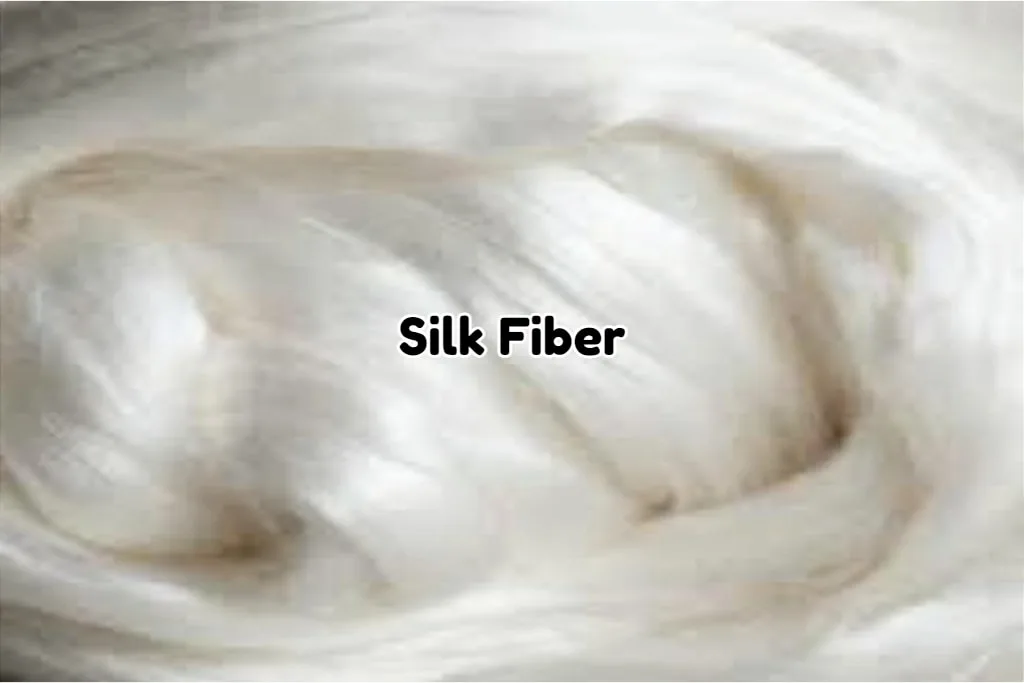Table of Contents
What is silk fiber?
Silk is an animal fiber and it is also called protein fiber. It is the only natural fiber that is found in filament form. Silk is produced by insects. Fibroin is the main chemical component of silk.
Like all textile fibers, silk has its own physical and chemical properties, which require knowledge for better processing in spinning, weaving, knitting, dyeing, printing and finishing. Here, I point out the physical and chemical properties of silk fiber.

Physical And Chemical Properties Of Silk Fiber
There are different types of physical and chemical properties of silk fiber. The following are the properties of silk fiber:
Physical Properties of Silk Fiber
There are a lot of physical properties of silk fiber. The following are the physical properties of silk fiber:. They are-
- Color: The color of silk fiber could be yellow, brown, green, or grey.
- Length: Silk fiber length varies from 400 to 700 meters.
- Tensile Strength: Silk is a strong fiber and it has a tenacity of 3.5 – 5 gm/den. Also, moisture affects the strength of silk when the wet strength of silk is 75 – 85%, which is higher than dry strength.
- Cross Section: Its cross-section is triangular.
- Elongation at Break: Its extensibility is 15% when at the break. In fact, its recovery from the stretch is 90% when the extension is up to 2%.
- Fineness: It is a very fine fiber although its fineness varies from 11 to 12 microns.
- Elastic Recovery: Elastic recovery property of silk fiber is moderate.
- Specific Gravity: Specific gravity is 1.25 to 1.34.
- Moisture Regain (MR%): Standard moisture regain is 11% but it can absorb up to 35%.
- Effect of Heat: Silk will withstand higher temperatures than wool. It will remain unaffected for prolonged periods at 140 °C, but it decomposes at 175 °C.
- Flammability: Silk fiber burn slowly when in contact with flame.
- Abrasion Resistance: Its abrasion resistance is eventually good.
- Effect of Sun Light: Sunlight tends to encourage the decomposition of silk eventually by atmospheric oxygen.
- Luster: Silk fiber has bright luster properties.

Chemical Properties of Silk Fiber
The following are the chemical properties of the silk fiber. They are:-
- Effect of Acids: The fibrin of silk can be decomposed by strong acids into its constituent amino acids, and in moderate concentration, acids cause a contraction in silk. besides, dilute acids do not attack silk under mild conditions.
- Effects of Alkalis: Alkalis causes less damage to silk fiber than wool. Weak alkalis such as soap, borax, and ammonia cause little appreciable damage. Finally, it dissolves in solutions of concentrated caustic alkalis.
- Effect of Organic Solvent: Silk is insoluble in the dry-cleaning solvents in common use.
- Effects of Insects: Insect does not affect silk markedly.
- Effect of Mildew: Mildew affects slightly this silk fiber.
In sum, that’s all about the silk fiber properties.
Uses of Silk Fiber
Silk fiber is a different type of textile fiber. Silk fiber has various uses in the textile and apparel manufacturing industries. In the first place, this fiber is popular all over the world for its valuable and outstanding appearance. It is also popular to make children’s wear, ladies’ wear, tie suits, and other applications.
Surely, the above physical and chemical properties of silk fiber will help us to be careful about the processing of silk in the different stages of processing, from spinning to garment making. Moreover, day by day, the use of silk products is increasing rapidly.






9 comments
Anita
The notes are so interesting
Liam
Insects do affect silk….
darren
mayber because you are ignorant
fridah.
Thanks. I can now do my assignments without doing much research.
Paula
You’re clearly the idiot that doesn’t understand textile vocabulary.
charlie
i did NOT get any help from this website and to anyone who dose not agree with me you are so stupid you need to put real help up for people instead of putting this crap up i am going to complain and try and get this website put down because you are giving no help to children and adult my child asked me what this means and even i did not know so if you do not wont me to get this website put down i suggest you start to put things on here that makes young people want to do homework or i will complain
xander john
one more:
oh no,god forbid that you COMPLAIN.
you are not going to do anything.
you child
cool
“Tensile Strength: Cotton is a strong fiber. It has a tenacity of 3.5 – 5 gm/den. The strength is greatly affected by moisture; the wet strength of silk …”
This doesn’t make any sense, if it’s wet strenght is 85% of its dry strenght then it means it would be weaker wet than dry (which is true) but the sentence says otherwise. also what does cotton has to do anything with this.
Ron Toney
When cleaning silk we avoid even mild mineral acids.